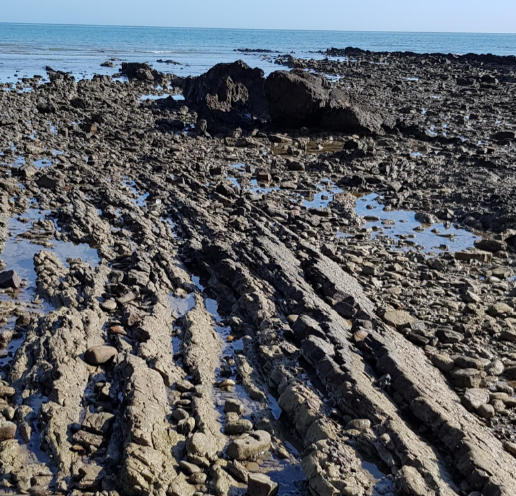|
|
Terrain roughnessTerrain roughness is defined as the variability or irregularity in elevation (highs and lows) within a sampled terrain unit[1]. It includes the three-dimensional ruggedness, rugosity, microtopography or microrelief of the terrain surface. Rough surfaces can occur on both consolidated (hard or rocky) and unconsolidated substrates. Typically, rocky or gravelly substrates are rougher than sandy or muddy areas, however the flow of water across a sand or mud bank can result in ripples that increase the surface roughness of the terrain.[1]. Roughness in periodically inundated areas such as wetlands alters the how water moves, inducing changes in current speed, wave energy and direction that affect sediment transport. Rough terrain traps sediment and nutrients, altering patterns of erosion and deposition, enabling biota such as plants to colonise the finer substrates, providing micro-relief refugia for biota to colonise from extremes of temperature and humidity and food sources for browsers and predators. Scale is essential when measuring terrain roughness as roughness metrics are scale dependent. A rougher terrain traps moisture and sediment in a wetland. Erosion in streambanks can be reduced by installing pilefields that increase streambank roughness, altering flow patterns to retain sediment. Roughness of intertidal and subtidal terrain reduces wave energy and changes current flows – further discussed in intertidal and subtidal – terrain roughness. Roughness caused by biota (rugosity) such as in coral reefs promote biodiversity and both reefs and mangrove ecosystems dissipate wind action and wave energy associated with storm surges and cyclones. References
Last updated: 25 October 2023 This page should be cited as: Department of Environment, Science and Innovation, Queensland (2023) Terrain roughness, WetlandInfo website, accessed 8 May 2025. Available at: https://wetlandinfo.des.qld.gov.au/wetlands/ecology/components/terrain/terrain-roughness/ |

 — Department of the Environment, Tourism, Science and Innovation
— Department of the Environment, Tourism, Science and Innovation


